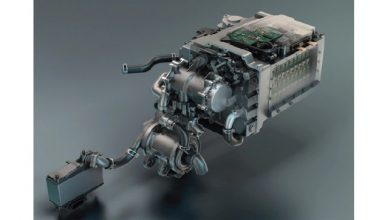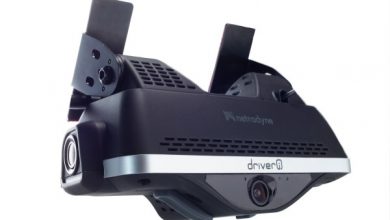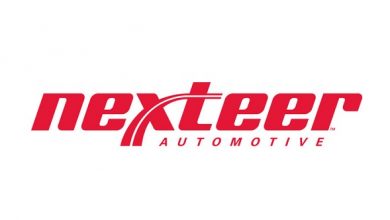High-Performance Computer and 3D-Display: Continental recognized twice with CLEPA award
Continental received a 2020 CLEPA Innovation Award from the European Association of Automotive Suppliers for its Body High-Performance Computer (HPC) and Continental Cooperation Portal in the category “Cooperation”

Continental received a 2020 CLEPA Innovation Award from the European Association of Automotive Suppliers for its Body High-Performance Computer (HPC) and Continental Cooperation Portal in the category “Cooperation”. The technology company’s solutions were awarded as pioneering innovation developed in close cooperation with a vehicle manufacturer. The High-Performance computer builds the foundation for fully connected vehicles, as it manages data streams in the vehicle and serves as an intelligent interface to the Internet. As the first Tier One supplier Continental has brought a Body HPC into series production as the In-Car Application Server for Volkswagen’s ID. electric vehicles. For the development of the HPC, Continental has created a tool that allows for the integration of software from third-parties highly efficiently and according to highest quality requirements – the so-called Continental Cooperation Portal.
The company has also been recognized with third place in the “Connectivity & Automation” category for its unique Natural 3D Lightfield Centerstack. It is the first automotive 3D display with gesture interaction, touch control and haptic feedback. Additionally, the 3D Natural Display enables all occupants of a vehicle to experience 3D Content without the use of special glasses or an eye-tracking camera. Taking place as part of an Online Innovation Week, the 2020 CLEPA Awards ceremony was broadcasted virtually on November 25, 2020.
“Thanks to our experience and know-how in all domains of vehicle electronics and across the entire market, we are able to serve the requirements of today´s market and evolve mobility into the digital age,” says Johann Hiebl, head of the Connected Car Networking (CCN) business unit at Continental. “I am delighted that our High-Performance Computer and the Continental Cooperation Portal were acknowledged with a CLEPA Award. Not only is this a recognition for Continental as a preferred partner to our customers but even more for our multiple development teams who showed enormous commitment and entrepreneurship throughout the process.”
HPC and Continental Cooperation Portal – prime examples of strong collaboration
Increasing functionality and connectivity of vehicles bring traditional distributed architectures with up to 100 or more electronic control units to their limits in terms of complexity and ability to manage innovative functions. Within a new and more centralized architecture design, the Body HPC replaces conventional distributed electronic control units and acts as a central ‘electronic brain’ to manage data within the vehicle and beyond. The vehicle becomes part of the Internet of Things and the complexity is simplified by bringing classic vehicle functions in one control unit. Acting as an application server and platform, the Body HPC hosts third-party software. For example, Continental integrates cyber security features from Argus on the platform to protect the connected vehicle from hacker attacks. Additionally, the Body HPC manages over-the-air software and firmware updates to keep the state-of-the-art over the entire course of a vehicle’s lifetime and allow to install new features and functions. The HPC lays the foundation for the shift towards service-orientation in vehicles of the future, comfortably and securely. The Body HPC by Continental was first introduced into series production as the In-Car Application Server (ICAS1) for the Volkswagen ID.3 model and will be rolled-out for all models based on Volkswagen’s electronic vehicle platform.
Whilst Continental’s HPC simplifies the complexity of the electronic architecture of the vehicle, to do so is actually a highly complex task. A Body HPC such as the ICAS1 is software-intensive: containing 20 million lines of code. During its development, Continental had to fulfil roughly 70,000 requirements from the customer with hundreds of Continental developers while actively supporting 18 external partners who also delivered software functions for integration.
To manage such a complexity, a high degree of collaboration between the customer, Continental and all third parties was needed. Thus, Continental created the Cooperation Portal to improve efficiency and effectiveness of software integration. Logged in users access encrypted manuals and software libraries so they are constantly up to date on the project activity. Time is saved as software can be pre-validated and pre-integrated by vehicle manufacturers and third-party software suppliers. This ensures only the highest quality software is integrated into the final vehicle.
CLEPA Award for revolutionizing the user experience with 3D technology
Besides the Body HPC, Continental also received a CLEPA Innovation Award for their Natural 3D Lightfield Centerstack. The jury voted the revolutionary display solution on third place in the “Connectivity & Automation” category. The display uses the so-called Lightfield nanotechnology and was developed in a cooperation between Silicon Valley startup Leia and Continental. It enables an entirely new 3D user experience for all vehicle occupants at the same time – without the need for glasses or an eye-tracking camera. The Natural 3D Lightfield Centerstack is the first automotive display to combine holographic 3D visualization with spatial gesture interaction, touch operation and haptic feedback for a most advanced user experience. By that, it brings not only greater joy-of-use but also contributes to safe mobility allowing for clearer accentuation of important bits of information, such as warnings.
“With our Natural 3D Lightfield displays we have developed a game changing element for the in-vehicle user experience of the future,” says Ulrich Lüders, head of strategy and portfolio at Continental’s business unit Human Machine Interface. “Where flat mainstream displays limit the range of design options and possible use cases, the Natural 3D display opens a whole new world of opportunities for functionality and differentiation. We are proud that CLEPA appreciated this outstanding technology advancement with an Innovation Award.”





